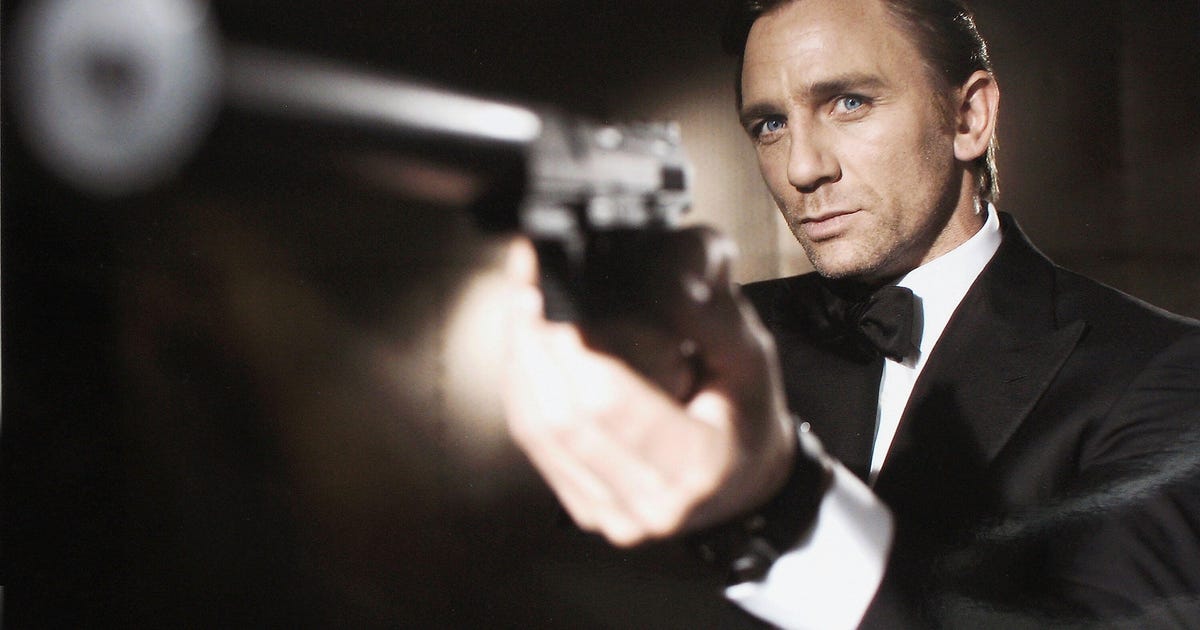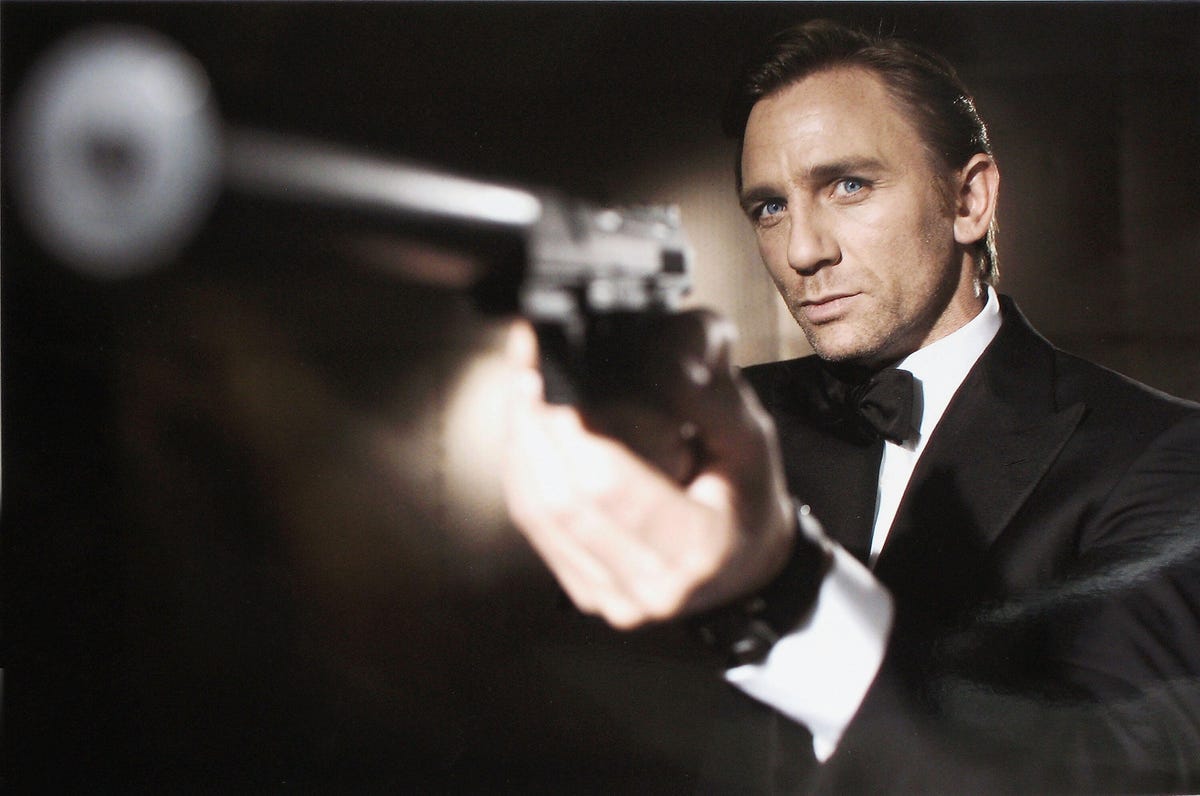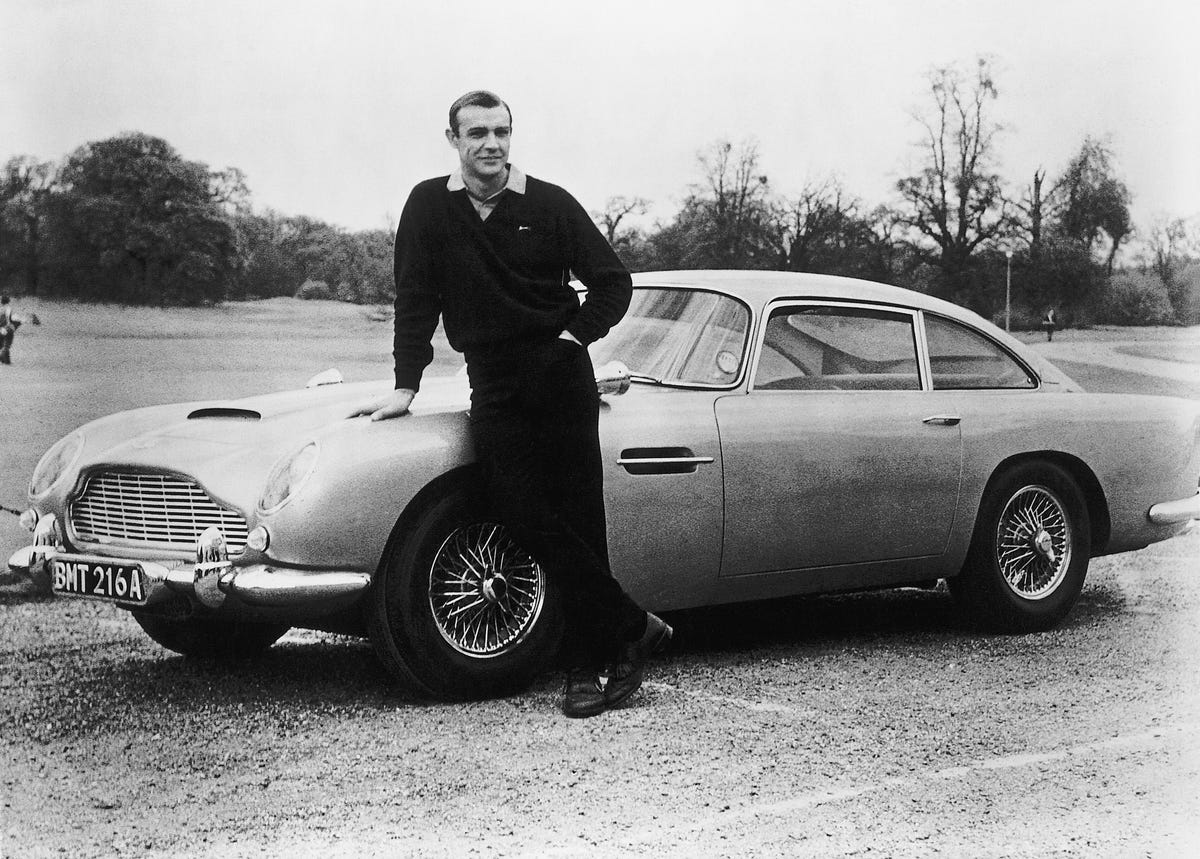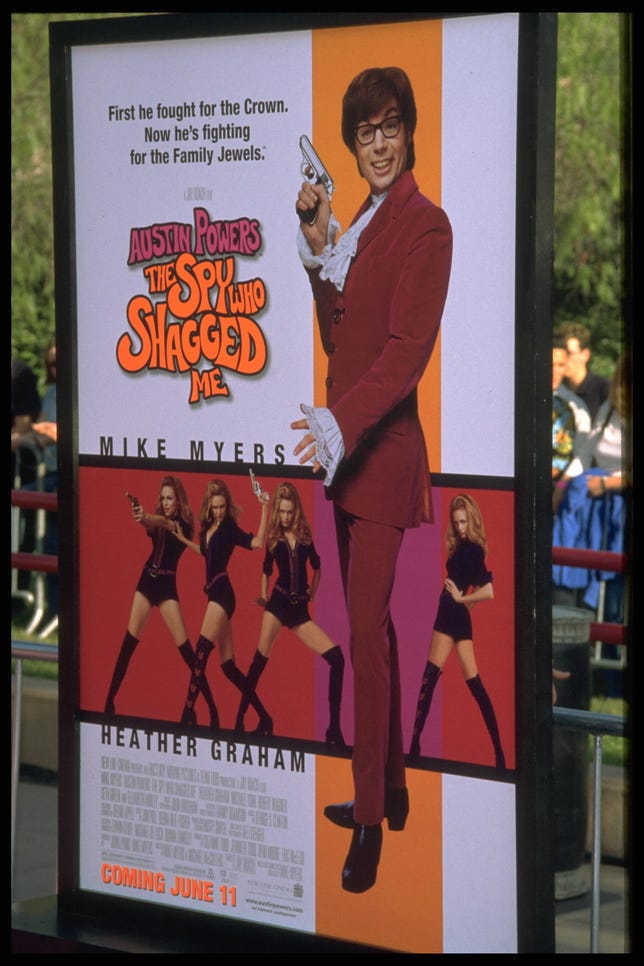
The latest James Bond movie, No Time to Die, has an ending unlike that of any other Bond movie that came before it. The film wrapped up Daniel Craig’s days as 007, and now speculation is running hot about what lies ahead for the franchise built around Ian Fleming’s superspy — including who’ll be the next James Bond. To have an idea where we’re going, you’ll want to know how we got here.
You may hear No Time to Die referred to as Bond 25, but that’s not quite the whole story. It’s the 25th installment in the Bond franchise from Eon Productions, which dates all the way back to 1962 and the debut of Dr. No, a modestly budgeted film that proved a hit and launched Sean Connery in a career-defining role. But there are also two other, unofficial Bond movies — one of them starring Connery himself. (Plot twists aren’t limited to the individual film scripts, you know.) So that’s 27 in total.
It’s a lot to dig into. The James Bond movie franchise is a pop culture institution, featuring one of the most indelible movie characters of all time — a suave, stylish secret agent played by six different actors — as well as spectacular stunts, gorgeous locales and arguably the best movie theme music ever. Even if you’ve never seen a Bond movie, you probably know something about 007: the timeless pose (man in tux, pistol in hand), the cocktail catchphrase (“vodka martini, shaken not stirred”), Blofeld the Bond villain, famously lampooned as Dr. Evil.
Over the years, there have been serious phases and silly phases, and Pierce Brosnan gives you a very different Bond from Connery, Craig or Roger Moore. I got started watching back in the Connery era, so I’m forever, um, bonded to those movies. But for contemporary audiences, I’m going with a different recommendation for which Bond movie to watch first, and where to go from there.

Daniel Craig means business as MI6 secret agent James Bond, aka 007.
Greg Williams/Getty Images
Start with Daniel Craig in Casino Royale
Daniel Craig’s first outing as James Bond is a terrific spy/action movie, period. It’s heart-poundingly good. But Casino Royale (2006) also did what no previous Bond movie could do: It completely rebooted the franchise, blowing up a formula that many saw as played out, with far-fetched gimmicks and belabored puns, even as it remained a steady box office draw. It’s based on Ian Fleming‘s very first Bond novel and gives us Bond very much as he was introduced to the world. It stays true to that original story in many essential ways (not a hallmark of Bond movies in general) while at the same time updating it for modern audiences attuned to the Jason Bourne and Mission: Impossible movies.
Craig himself delivers all the muscle and menace the character deserves, in keeping with Fleming’s depictions and as measured against Connery, still the standard by which all other Bonds are invariably judged. There’s nothing glib about this Bond, and if he does look good in a tuxedo, you always know there’s a brute inside ready to battle the baddies. You learn right off the bat how he earned his double-0 (license to kill) rating, then it’s off to a spectacular chase and gunfight. That’s just in the first 18 minutes.
See also: James Bond Villains Build the Best Lairs, From Volcanoes to Space
High points, too, for a nasty villain in Mads Mikkelsen’s Le Chiffre, Judi Dench as Bond’s no-nonsense boss M and Eva Green as Bond’s female foil.
Casino Royale also opens the door to the strong series of movies that follow: Quantum of Solace (2008), Skyfall (2012) and Spectre (2015) and No Time to Die (2021), which CNET’s Rich Trenholm, in his review, calls an “epic, explosive and emotional swan song.” There’s more than just action across the five-film run: There’s an arc that leads us deeper into Bond’s past and how it drives him in the present day.
Next: From Russia With Love / Goldfinger
This whole franchise got going with Connery, so you can’t go wrong starting there. But for now let’s skip the very first movie, Dr. No. Not that there’s anything wrong with it, but the two movies that followed are more definitive — they’re often the top two in lists of the best Bond movies. Pick either of these and you’re getting absolutely top-shelf Connery, the man who defined Bond and who was the heart of the franchise when it exploded into a phenomenon.
From Russia With Love (1963) gives you an honest-to-goodness, old-fashioned spy story, with no tech wizardry to speak of and no evil plan to destroy the world. It’s Bond on an intimate scale, a character-driven tale of our spy, the woman sent to seduce him and the assassin (a buff and square-jawed Robert Shaw) assigned to take him down. (It also gives us our first glimpse of Blofeld, the recurring uber-villain.) In the finest Bondian tradition of exotic locales, this one cozies up to Istanbul and takes a memorable ride on the Orient Express. The fight scene in the train compartment is rightfully a classic.

Sean Connery seems to be enjoying himself. Why not, when you can drive the iconic 1964 Aston Martin DB5, his co-star in Goldfinger.
Getty Images
Then along came Goldfinger (1964), the third movie. This one ratcheted things up and pretty much set the splashy tone for all the movies up till Craig arrived — the outlandish plot (set off a nuke to irradiate the gold at Fort Knox), the over-the-top villain and henchman, the Aston Martin DB-5 sports car tricked out with machine guns and ejector seat, the laser with which Goldfinger memorably threatens 007 (“No, Mr. Bond. I expect you to die”). Plus: One of the greatest theme songs of the series.
Connery is dashing, virile, devilish, supremely confident — everything you’d expect from a modern action hero, in part because he was the template.
See also: The Aircraft of James Bond: Little Nellie, a Vulcan Bomber and a Concorde
James Bond: The deep cuts
I’d recommend getting a handful of Craig and/or Connery movies under your belt before venturing out more widely. Best to watch the Craig installments in sequence, but the Connerys (like the Moores, Daltons and Brosnans) you can watch in any order. Stick with the five Connery films from the 1960s before looking toward his two comeback efforts. The early movies are very much of their time, of course, so while you might chuckle at the quaintness of the tech, the fashions and the cinematography, you may cringe at some of the ethnic depictions and sexual mores.
James Bond Movies Ranked, From Sean Connery to Daniel Craig
The four other Bonds
Roger Moore and Pierce Brosnan are the two horses besides Connery and Craig. Moore brought a lighter touch to Bond over the course of seven films throughout the 1970s and halfway into the 1980s. They’re mostly romps, really, never too dark and often veering into the downright silly, with ever more outlandish stunts and situations — he even makes it into space, in 1979’s Moonraker, at the start of the space shuttle era. A good Moore vehicle to start with is For Your Eyes Only (1981), which is one of the more grounded stories from his run.
See also: Being James Bond: How 007 Movies Got Me Into Intelligence Work
Brosnan picked up the baton in the mid-1990s and starred in four films. More muscular than the Moore movies, they continued the tradition of ultra-spectacular stunts and groaner puns. It was steady work and enduring box office appeal, if not quite at peak levels. Your best bet: Goldeneye (1995), Brosnan’s first outing.
More in the footnote category are Timothy Dalton and George Lazenby. Dalton made two movies in the late 1980s, and it was a bit of a grim turn. Flip a coin, but hope that it turns up The Living Daylights. For a more intriguing entry, try Lazenby’s one go at it, On Her Majesty’s Secret Service (1969), the producers’ first stab at casting a different actor as 007. It’s the one in which Bond gets married — to Diana Rigg, no less.
What lies ahead for 007
Right now it’s a waiting game. Despite the intense sense of closure in the finale of No Time to Die, the movie credits closed with the upbeat declaration that “James Bond will return.” That’s it for now. Eon Productions hasn’t set any timetable for either naming the next Bond actor or announcing a title for the next movie or anything. “We’ll figure that one out,” Barbara Broccoli, longtime 007 producer, told Deadline in December.
Will we see more than just a blockbuster movie every few years? Now that Amazon owns MGM, home of the Bond catalog, will Bond branch out into a Prime Video television series? Eon and Amazon are holding their cards close to their chest. In December, in a profile article in The Hollywood Reporter, Broccoli was less than definitive: “As far as we know, [Bond 26] will be an MGM film under an Amazon banner.”
But also: “We make theatrical films and go to great pains to make them as cinematic as possible,” she said. “I think that’s what we intend to do, but things change, so who knows? Down the road, it may be different.”
The next James Bond
That’s the bajillion-dollar question, and the oddsmakers have kept busy ranking the contenders for the next James Bond, including longtime fan favorite possibilities like Idris Elba and Tom Hardy. But look, let’s be realistic. A good run for a Bond actor is about 10 to 15 years, and as Ian Fleming originally drew up the character, Bond starts out in his early to mid 30s. Elba is 49 already, and Hardy is 44. Both would be in their 50s for all or a good portion of a 007 career.
There are plenty of 30-somethings to consider, from Henry Cavill to Regé-Jean Page, Richard Madden, James Lowden and Dev Patel. Don’t bet on Tom Holland, much as the 25-year-old Spider-Man star might want it. And what about Lashana Lynch, who briefly held the title of 007 in No Time to Die? That seems unlikely.
“I think it will be a man because I don’t think a woman should play James Bond,” Broccoli said in that Hollywood Reporter feature, adding that it’s better to create roles specifically for women. But otherwise, she indicated, diversity is a consideration in casting the next Bond. “He should be British, so British can be any [ethnicity or race].”
James Bond movies in chronological order
In the official Bond canon — the films made by Eon Productions, starting with Harry Saltzman and Albert Broccoli, and continuing with others in the Broccoli clan — there are 25 films. Because of licensing issues, there were two other, non-canonical movies, including (confusingly) one starring Connery, for a grand total of 27.
Sean Connery
David Niven, et al.
George Lazenby
Roger Moore
Timothy Dalton
Pierce Brosnan
Daniel Craig
Fun fact: Casino Royale has been filmed 3 times
There have been three versions of Casino Royale, all radically different. We’ve already gone over the Daniel Craig version, a strong contender for best and most definitive Bond movie ever.
Don’t confuse it with the 1967 version of Casino Royale that’s both a spoof and a god-awful big-budget mess of a movie. It’s an odd blend of Bondian motifs, old-time Hollywood stars and then-trendy psychedelia. The plot, such as it is, involves trying to fool the bad guys with a number of different people claiming to be James Bond, including David Niven (the real Bond), Peter Sellers, Woody Allen and former “Bond Girl” Ursula Andress.
Then there’s the true footnote, and totally not a Bond movie, the 1954 adaptation of Casino Royale for an American TV anthology series called Climax! It’s a roughly 52-minute episode in which American actor Barry Nelson plays the hero as “Card Sense Jimmy Bond,” an agent for the “Combined Intelligence Agency” whose delivery tends toward watered-down Sam Spade. The highlight: Peter Lorre plays the villain, a sad-eyed and shopworn Le Chiffre.
Laughing matters: The James Bond spoofs

In the Austin Powers movies, Mike Myers spoofs both Bond and his archnemesis, Blofeld.
Jody Cortes/Getty Images
Once you’ve seen a few Bonds, especially the ones from the Connery and Moore eras, you’ll have a rich lode of references for the many, many Bond spoofs over the decades.
How powerful a hold has Bond had on the Hollywood imagination? It brought Mike Myers to the peak of his fame with the Austin Powers movies, which got started in 1997 but drew heavily on the ’60s and ’70s Bonds. The first Johnny English movie, with a comically inept Rowan Atkinson, didn’t come till 2003. You’ll find homages to Bond in everything from the Kingsman franchise to the Despicable Me movies (especially the first one) to 2019’s Spies in Disguise, an animated comedy with Will Smith as a tuxedo-wearing, gadget-equipped secret agent (who gets turned into a pigeon).
For a deeper album cut, look out for a pair of movies from the 1960s — Our Man Flint and In Like Flint — in which James Coburn gives a goofy-brilliant turn as a very Bond-like secret agent. That era brought a whole host of TV shows that very entertainingly mined the same soil — The Man From UNCLE, Get Smart, I Spy, The Wild Wild West — and then served as fodder for movie reboots in more recent years.
Even Arnold Schwarzenegger got into the game, in the James Cameron-directed True Lies (1994).
Literary matters: The James Bond books
James Bond got his start in a series of novels by Ian Fleming — 12 of them, plus a smattering of short stories. The first novel, Casino Royale, came out in 1953, less than a decade after the end of World War II, during which Fleming gained first-hand knowledge of spies and spying. It’s worth picking up one or two of the books if only for the comparison with the movies, which diverge anywhere between a little and “lose everything but the title.”
Try Casino Royale for sure, or maybe From Russia With Love (President Kennedy famously was a fan) or On Her Majesty’s Secret Service. Note: The books are all a lot less flashy than the films, and they’re of a very different era, the last ones having been written by about the time Goldfinger (movie No. 3) was hitting the screen.
There have also been Bond books written by other authors. Kingsley Amis kicked things off in 1968 with Colonel Sun, and was followed by writers including John Gardner and Sebastian Faulks.
Little did you suspect, but Fleming also wrote the children’s novel Chitty-Chitty-Bang-Bang.
Ian Fleming’s Bond books, in chronological order:
- Casino Royale (1953)
- Live and Let Die (1954)
- Moonraker (1955)
- Diamonds Are Forever (1956)
- From Russia, With Love (1957)
- Dr. No (1958)
- Goldfinger (1959)
- For Your Eyes Only (1960) — collection of short stories including the title story, Quantum of Solace and From a View to a Kill
- Thunderball (1961)
- The Spy Who Loved Me (1962)
- On Her Majesty’s Secret Service (1963)
- You Only Live Twice (1964)
- The Man With the Golden Gun (1965)
- Octopussy and The Living Daylights (1966) — those two short stories and, in later editions, two others
Bonus movie: The documentary
The Hulu original documentary Becoming Bond is a quirky and absolutely fascinating biopic about George Lazenby, who came out of nowhere to become the man who took over for Sean Connery. You get a good look at how On Her Majesty’s Secret Service fits into the franchise, but more than that, a riveting picture of Lazenby himself, through sometimes truly moving reminiscences of a 70-something Lazenby and through reenactments of his early years that have something of a Drunk History vibe.

